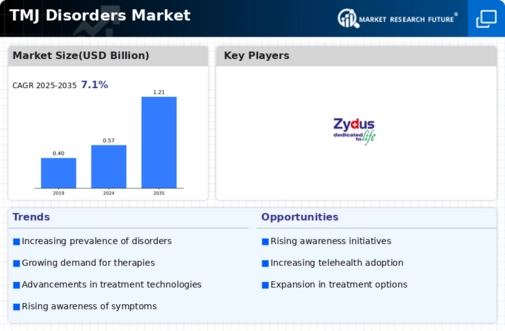TMJ Disorders Market Summary
As per Market Research Future Analysis, the TMJ Disorders Market was valued at 0.57 USD Billion in 2024 and is projected to reach 1.21 USD Billion by 2035, growing at a CAGR of 7.10% from 2025 to 2035. Key drivers include increased healthcare spending and the introduction of advanced treatments. The market is witnessing a shift towards minimally invasive treatments, driven by patient demand for effective and less burdensome solutions. Digital health technologies, such as telemedicine and mobile applications, are enhancing patient engagement and care. Personalized medicine is gaining traction, with healthcare providers adopting individualized approaches to treatment, supported by advancements in diagnostic technologies.
Key Market Trends & Highlights
The TMJ Disorders market is characterized by several key trends driving its growth.
- Minimally invasive treatments are gaining popularity, improving patient outcomes and satisfaction.
- The medication segment generated the highest revenue, focusing on pain relief and inflammation reduction.
- Ambulatory surgery centers are the leading end-user segment, providing cost-effective outpatient procedures.
- North America dominates the market due to high prevalence and advanced healthcare infrastructure.
Market Size & Forecast
| 2024 Market Size | USD 0.57 Billion |
| 2035 Market Size | USD 1.21 Billion |
| CAGR (2025-2035) | 7.10% |
Major Players
Key players include Sun Pharmaceutical Industries Ltd, Abbott Laboratories Inc., Mylan NV, Teva Pharmaceutical Industries Ltd, Bristol-Myers Squibb Company, Bayer AG, Allergan, Zydus Cadila, Jubilant Life Sciences Limited, and Novartis International AG.













Leave a Comment